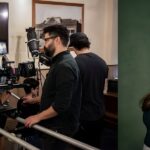Fostering innovation at the executive level is a delicate balancing act. Creativity is essential for companies to stay competitive, but it can easily veer into chaos without proper structure. To ensure that innovation thrives without disrupting the flow of operations, executives must create an environment that encourages new ideas while maintaining focus and discipline. This requires clear frameworks, communication, and leadership that prioritizes both creativity and stability. In this article, we will explore strategies for fostering innovation without letting it spiral into disorganization.
The Role of Leadership in Structuring Creativity
At the heart of every innovative company is strong leadership that understands the importance of both creativity and order. Executive leaders must set the tone by creating a culture that values innovation, but also ensuring that teams have the necessary structure to bring ideas to fruition. This begins with clear expectations and effective management practices that support a balance between creative freedom and operational efficiency.
One key aspect of structured creativity is understanding the difference between fostering creativity and managing chaos. Leaders must ensure that employees are encouraged to think outside the box and take risks, but also provide the necessary boundaries and processes to ensure that these ideas can be implemented in a manageable way. Encouraging open communication and collaboration among teams is critical, but it should be done with purpose and clarity to avoid confusion and inefficiency.
Encouraging Experimentation Without Losing Focus
Innovation thrives when people feel empowered to experiment, but how can this be achieved without disrupting the company’s core operations? Executives need to create safe spaces for experimentation while keeping a close eye on the overall business objectives.
One effective way to achieve this is by setting up pilot programs or innovation labs. These dedicated spaces allow teams to test new ideas or processes in a controlled environment, away from the core operations. These spaces should have defined goals, timelines, and deliverables to ensure that they don’t derail the company’s focus. By treating innovation as an ongoing, iterative process, executives can ensure that creativity doesn’t interfere with the company’s long-term strategic goals.
It’s also important for leadership to encourage a mindset of experimentation, where failure is viewed as a valuable learning opportunity. However, to avoid chaos, there should be a system in place for evaluating the success or failure of these experiments and determining which ones should be scaled or discarded. Clear metrics and feedback loops allow teams to remain focused while still embracing the freedom to innovate.
Aligning Innovation with Organizational Strategy
Creativity can be a powerful force for business growth, but it must align with the broader strategic goals of the organization. Executives need to ensure that innovation isn’t happening in a vacuum or as a random set of efforts. To prevent this, they must establish a framework that integrates innovation into the company’s overall strategy.
This begins with clear communication about the company’s mission and vision. Employees at every level should understand how their creative efforts contribute to the broader goals of the organization. For example, leaders can align innovation initiatives with key business objectives, such as improving customer experience, enhancing operational efficiency, or expanding into new markets. By keeping innovation linked to the company’s strategy, executives can prevent projects from becoming disconnected or irrelevant.
Furthermore, structuring creativity involves balancing short-term projects with long-term goals. While it’s essential to generate quick wins that show immediate value, executives must also support initiatives that align with the long-term vision, even if they don’t offer immediate returns. This way, creativity is not only reactive but also strategically proactive, helping the company stay ahead of trends and competitors.
Building a Framework for Scalable Innovation
While it’s important to foster creativity, it’s equally crucial that innovation can be scaled to support the company’s growth. At the executive level, leaders must design a system that enables creativity to move from conceptualization to execution without overwhelming the organization. This system should be flexible yet structured enough to allow for rapid adaptation and scaling.
One key to building this framework is establishing cross-functional teams that can work together to refine and implement ideas. Collaboration between departments—whether between marketing, operations, or technology—ensures that new ideas have the input of various stakeholders, increasing their chances of success. Additionally, clear processes and workflows should be in place to ensure that creative initiatives can transition from pilot phases to full-scale implementation efficiently.
Furthermore, executives should invest in technology and infrastructure that can support innovation. This includes tools for project management, data analysis, and communication that enable teams to work collaboratively and track the progress of innovation initiatives. By leveraging the right tools, executives can streamline innovation efforts while maintaining focus on the company’s broader objectives.
At the executive level, structuring creativity without stifling it is a key to driving business success. Leaders must create an environment that supports innovation through clear communication, well-defined processes, and alignment with the company’s strategic objectives. By fostering a culture that balances creativity with operational discipline, executives can ensure that new ideas contribute to the company’s long-term growth while maintaining a sense of order and focus.
















